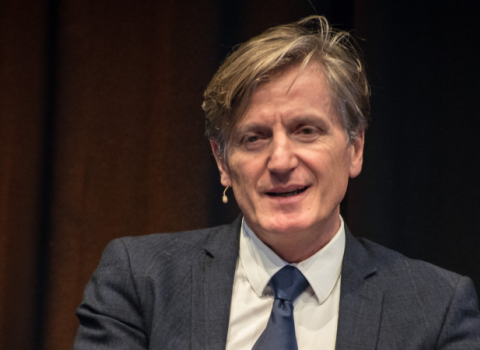Six information and communication technology (ICT) projects selected to compete for flagship status and €1 billion funding, announced at the EU’s Future and Emerging Technologies conference held in Budapest last week, are all equally compelling and important.
There are the promising objectives of building intimate and comprehensive computer models of how the human body and the human brain function and respond to influences such as drugs, infections and specific gene mutations, for use in medical research and personalised healthcare; providing multifactorial models of how societies function for use in policy making and administration; an ambition to capture ambient energy to power permanently implanted nanosensors to monitor health and well-being; and a project to drive practical application of graphene, the new super material that is harder than diamonds and has the potential to replace silicon in microprocessors and - in view of its transparency - to allow for the true integration of photonics and electronics.
But these projects are not only impressive in terms of their scientific objectives. They are also unprecedented in fundamental research in terms of the scope of the collaborations they envisage. This is not only the case for the number of disciplines they will bring to focus on their aims, but also in the geographical range and the mixture of public and private sector participants.
Only two of the six will be selected for flagship status. To achieve their objectives – and deliver EU vice commissioner Neelie Kroes’ vision of becoming two of the most important research projects in the world – the FET flagships will have to look well beyond computer science. They will need to link up with researchers in materials science, neuroscience, bioinformatics, robotics, pharmacology and medicine, amongst others.
So, for example, the Human Brain Project, led by Henry Markram at École Polytechnique Fédérale de Lausanne, includes 13 other universities and brings together more than one hundred organisations covering disciplines including neuroscience, genetics, applied mathematics computer science, robotics and social sciences.
Similarly, the Graphene Science and technology for ICT project, headed by Jari Kinaret at Chalmers University of Technology in Sweden, involves over 130 research groups, representing 80 industrial and academic partners in 21 European countries.
Meanwhile, the IT Future of Medicine, led by Hans Lehrach at the Max Planck Institute has already signed up companies including Microsoft, Xerox, IBM, Intel, Amazon, Siemens and Oracle.
Overcoming fragmentation
This level of collaboration represents a serious attempt to overcome the fragmentation that typically prevents Europe from pulling its weight in basic research. As Kinaret noted in outlining the ambitions of the Graphene project, there are currently 54 EU-funded projects in the field. There are also national graphene programmes. “All these activities are independent of each other and are subcritical,” Kinaret claimed. “We want to get a focussed community, because such fragmentation equals waste,” he said.
If the two chosen flagships can deliver, they will become sizeable demonstrations of the single European Research Area in action.
Indeed, making these projects operate as true collaborations is possibly more critical than the research per se. Without meaningful collaboration, there will be plenty of scientific papers published and academic CVs burnished, but the research will not translate through to the new applications, new markets and social benefits that the Commission hopes to generate.
In planning to provide the two winning projects with high levels of funding over a whole decade, the European Commission is rising to the challenge of investing for the long term at a time of austerity when Europe’s national governments and companies are cutting back on research and development.
The Commission has given each of the six projects – chosen by peer review from a total of 21 submissions - €1.5 million and 12 months to refine and hone their research plans and to formalise the relationships between the many public and private sector bodies that will be contributing.
Kroes said this will require them to develop new models of governance and new financial structures.
But the Knowledge and Innovation Communities (KICs) set up under the auspices of the European Institute of Innovation and Technology, have already trodden this path. In common with FET flagships, one aim of the KICs – in ICT, sustainable energy and climate change – is to forge new ways for academics and industrial researchers to work together in cross-border projects.
The KICs invested a huge amount of time and effort in exploring and setting up legal and administrative structures to fit the brief of co-locating activity in several countries, as Science|Business reported last December.
As Diego Pavia, CEO of the InnoEnergy KIC told Science|Business then, the time and effort taken to do this was not surprising, “We are building something new” and “everyone is learning,” he said.
Outlining the scope of the Graphene project in Budapest last week, Kinaret said it has been left to the project leaders to suggest how they should be run.
The business models and governance structures the KICs worked so long and hard to devise may not read across neatly to the requirements of the FET flagships. But it seems important that would-be FET flagships are made aware of these efforts before they waste time and money on reinventing administrative wheels rather than advancing their fascinating projects.





 A unique international forum for public research organisations and companies to connect their external engagement with strategic interests around their R&D system.
A unique international forum for public research organisations and companies to connect their external engagement with strategic interests around their R&D system.